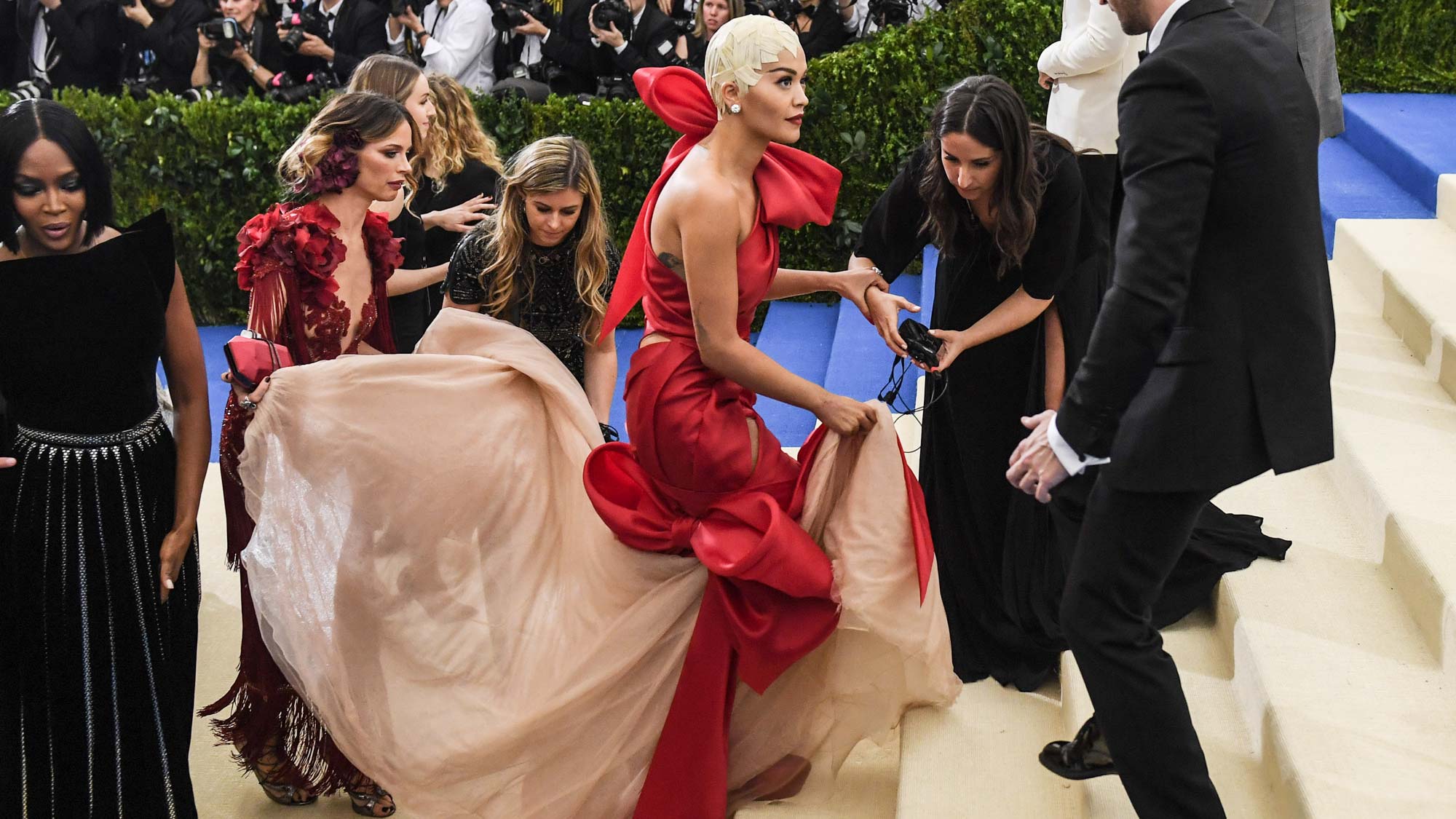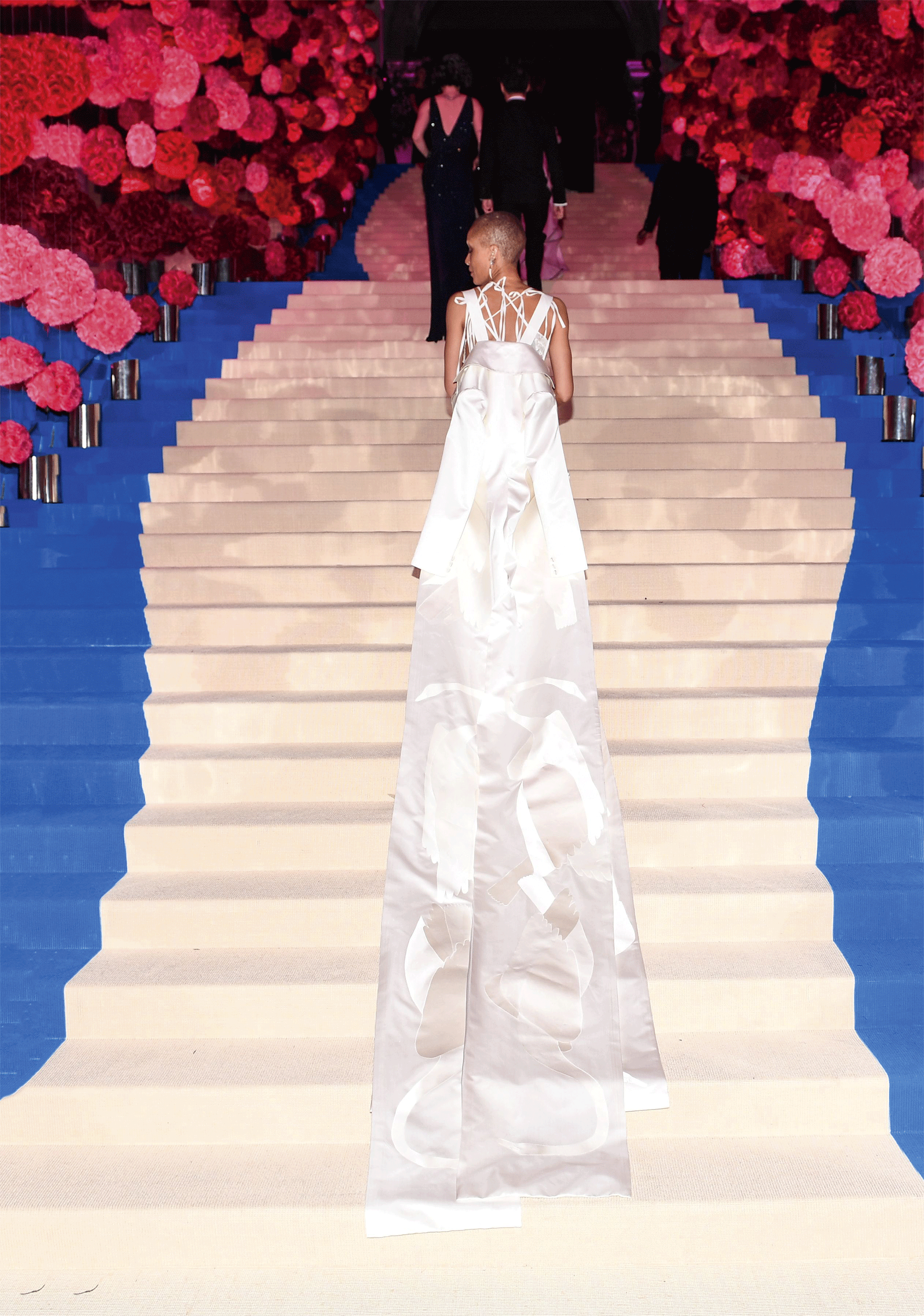What’s so mega about the Met Ball?
It’s the fashion event that makes global headlines, and this year’s theme – Catholicism – is set to stir up more controversy than ever. Victoria Moss takes a look at how the gala has gone from haute couture to political hot potato

It’s the fashion event that makes global headlines, and this year’s theme – Catholicism – is set to stir up more controversy than ever. Victoria Moss takes a look at how the gala has gone from haute couture to political hot potato
A single ticket costs around $30,000 (about £21,615). A table at the dinner, in excess of $275,000 (about £198,138). Even so, there’s a waiting list to get in, and all attendees must be approved by Anna Wintour. Immortalised in Andrew Rossi’s 2016 documentary, The First Monday In May, New York’s Met Ball (or Met Gala, as it’s officially called) is fashion’s biggest, starriest night out. The theme of this year’s event, co-hosted by Donatella Versace, Amal Clooney and Rihanna, is ‘Heavenly Bodies: Fashion and the Catholic Imagination’. It is potentially set to be one of the most debate-provoking yet.
Ostensibly, the ball serves as the opening of the summer exhibition of the Metropolitan Museum of Art’s Costume Institute. Working behind the scenes to bring these exhibitions to fruition have been two key figures: Harold Koda (who started out assisting the legendary editor Diana Vreeland when she was a special consultant to the Institute) and Andrew Bolton, who took over as curator-in-charge when Koda stepped down in 2016. The Met Gala theme is always a hot topic; previous themes have included ‘Punk: Chaos to Couture’, ‘Alexander McQueen: Savage Beauty’, and ‘AngloMania: Tradition and Transgression in British Fashion’. The ball is a crucial fundraising arm, having raised over $13.5million (about £9.7 million) in 2017 for the gallery, enabling these exhibitions to exist. The involvement of Wintour, who has been chairwoman for 23 years, has seen the ball evolve from a high-society do into the world’s biggest red-carpet extravaganza. For attendees, this isn’t about showing off serious actor/artiste/ musician credentials; it’s about achieving maximum column inches/Instagram likes/Facebook shares and getting on to the best-dressed lists. It’s about snaring cosmetic and fashion-house campaigns. It’s about being seen as part of the creative elite. It’s about status and power.
Wintour has shrewdly maximised the marketing tool of the red carpet to make this one of the world’s most-watched events. After all, it was at a Met Ball that Gigi Hadid and Zayn Malik made their first red-carpet appearance together in co-ordinating looks (very Beckhams circa 2000), Solange Knowles took on Jay Z in a lift, and Serena Williams debuted her baby bump. Not to mention, Rihanna’s yellow gown with 16ft train by Guo Pei, which made meme history as the giant omelette.
Guests are given staggered arrival times, so that the intensity can be managed (and everyone gets their shot). Dame Wintour traditionally goes first, while Beyoncé has often been a closing act. The Met Museum’s grand staircase, swathed in its red carpet, is the ultimate backdrop, and the level of detail that goes into the planning is legendary. There are even canapé diktats: no parsley, as it sticks in teeth; no bruschetta, as it’ll make a mess of your dress.
Wintour and her team oversee designer and celebrity pairings, approving what they’ll wear. In The First Monday In May, Wintour is seen literally moving tables around and scrutinising the seating plan, barking at one point, ‘Harvey [Weinstein] won’t like that.’ (Shame that even Wintour doesn’t have the power to turn back time.)

This year’s show – which will be the biggest the Met has ever constructed – is gearing up to be the most eyebrow-raising yet. Bolton had long considered looking at religion in fashion, and originally sought to cover Judaism, Buddhism, Christianity, Islam and Hinduism. Aside from the vastness of this subject matter, stoking up religious sensitivities in an age of extremism was perhaps wisely avoided. If you thought the second Sex And The City movie was crass for its patronising portrayal of Muslim women and their burqas, can you imagine the furore caused by an examination of the dress of followers of Islam? Niqab v nun’s habit? Definitely best avoided.
Celebrity news, beauty, fashion advice, and fascinating features, delivered straight to your inbox!
Catholicism, largely due to a great number of notable Catholic designers, is an enduring theme of Western fashion, not to mention the faith’s own predilection for elaborate robes and accoutrements. Bolton explains that the collaboration between fashion and religion, while often ‘complex and contested… has produced some of the most inventive and innovative creations in the history of fashion’.
The show will marry 20th-century style with related pieces from the museum’s religious art collection, as well as about 40 ecclesiastical masterworks (papal vestments and accessories, such as rings and tiaras from the 18th to 21st century) on loan from the Sistine Chapel sacristy, many of which have never been outside the Vatican. These will be displayed away from the designer pieces. Presumably to avoid offending the faithful by juxtaposing a monk’s robes with say, one of Jean Paul Gaultier’s bondage-nun looks.
The designers featured in the exhibition all draw on Catholic inspirations differently – from the opulent baroque prints, rich mosaics, bling crucifixes and deep hues of maximalists Gianni Versace, Dolce & Gabbana, Christian Lacroix and John Galliano to the stark, monastic minimalism of Cristobal Balenciaga and Raf Simons. There is the lure of the Gothic (Riccardo Tisci at Givenchy, Gareth Pugh, Christopher Kane), but also a religious sense of purity, and restriction – Coco Chanel’s preferred black and white palette and pearl strewn rosary-style necklaces were surely informed by the formative years she spent in an abbey orphanage.
Some pieces will be matched with the artwork it is inspired by: the gold Byzantine 11th-century crucifix which is reflected in Gianni Versace’s final collection; the lapis lazuli blue dress used in depictions of the Virgin Mary, recreated by Jeanne Lanvin. Then there are designers whose religious references are there to provoke and subvert. John Galliano’s ‘Freud or Fetish’ 2000 couture show for Dior opened with an incense wielding priest. Vivienne Westwood set an inverted image of the crucifixion against a swastika on a punk era T-shirt emblazoned with the word ‘Destroy’. While Jean Paul Gaultier earned his ‘enfant terrible’ moniker with suspender-clad nuns in his 1989 collection. When told that he’d actually offended many of his audience, he exclaimed, ‘But I’m Catholic!’ Never one to shy away from a headline, he also took the opportunity for cross-denominational offence with his 1993 ‘Chic Rabbis’ collection (the clue is in the title). And this did nothing to dissuade Hussein Chalayan from taking on the niqab in his 1998 show, ‘Between’, in which six models were clad in varying lengths of the garment, each revealing more and more nudity; or Alexander McQueen’s 2000 outing, featuring sequinned burqas.
The Catholic church – still reeling from its own sexual abuse scandals – is not always depicted as a Gloriana of glitz. It is questioned, and far from revered. In this context, perhaps an examining of its aesthetics is timely rather than trite. Given the power of faith, it would perhaps seem strange if designers didn’t explore this part of their make-up.
Of this year’s co-hosts, only Donatella Versace is Catholic, but Amal Clooney and Rihanna offer integrity and cool and will bring elegance and attitude to the red carpet. Other crucial questions remain: Will Beyoncé do a sheer take on papal chic? Might Kim Kardashian cover up? And where will the extravaganza go next? In the shadow of #MeToo, an analysis of women’s political style statements could be sharp. From scarlet letters to suffragettes in white, and pink pussy hats – there’s surely enough to stir up some more fashion controversy.
Victoria Moss is senior fashion editor at The Telegraph
The leading destination for fashion, beauty, shopping and finger-on-the-pulse views on the latest issues. Marie Claire's travel content helps you delight in discovering new destinations around the globe, offering a unique – and sometimes unchartered – travel experience. From new hotel openings to the destinations tipped to take over our travel calendars, this iconic name has it covered.